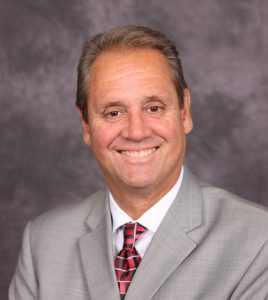By Eugene E. Valdez AKA The Loan Doctor
As a business loan consultant one of the most common questions I am asked by my CEO clients is “How do I determine how much money I need to start a business?”
It is well documented that one of the principal reasons why small businesses fail is an insufficient amount of startup capital. A sufficient amount of startup capital is a function of knowing how to accurately estimate “all of your” startup costs.
Estimating your startup costs is a simple four step process: (let’s assume you’re a manufacturer)
The first step involves doing some research to obtain estimates on what I call “miscellaneous” startup costs. These miscellaneous startup costs are usually minor in nature and can represent a number of areas. These areas might include:
- prepaid insurance premiums
- first and last’s month’s rent
- business license and permits
- legal fees to document a new business entity
- utility set up charges and deposits
- business cards, stationary, brochures, invoices
- beginning supplies, paper, pencils, etc.
- small office equipment- cell phone, computer, printer
- office furniture; desks, filing cabinets
- business checks, deposit slips, etc.
These expenses are those which you incur prior to “opening your doors” and are “one time in nature”, that is, once you’ve paid them you usually don’t have to pay them again. Let’s say for purposes of this example that you estimate that total projected miscellaneous costs will be $30,000.
The second step involves estimating the costs of major assets which are defined as major equipment, raw material inventory and a commercial building. Examples of equipment could be manufacturing equipment, delivery trucks, tools, shelving etc.
For real estate there are several examples depending on whether you want to own or lease. If you want to own your business property then you have to calculate land and building costs and interest expense. If you’re going to lease a building you will need to estimate all of the leasehold improvements you deem necessary to make the building “ready” to serve your purposes. Let’s say for purposes of this example that you project these major assets costs to be $400,000.
The third step involves calculating a working capital reserve. Think of your working capital reserve as the source of emergency cash you will need to meet your monthly fixed overhead costs during your first few months in business. As a startup company you will have few customers, few sales and minimal cash during your first few months.
To calculate your working capital reserve estimate your monthly overhead which might include:
- rent,utilities
- advertising
- taxes
- insurance premiums
- salaries, (office & plant)
- your compensation
- additional inventory
Let’s say this figure totals $15,000 per month. Now decide how many months you think it will take you to become “established” with stable customers. Let’s say you decide on five months. Your projected working capital reserve is thus the number of these months times your estimated monthly overhead costs or 5 x $15,000 equal to $75,000. Your goal is to make sure you have $75,000 in the bank before you start your business. This will give you the peace of mind that you will have the necessary cash to pay your overhead during your startup and low cash period.
The fourth step involves adding up all the components and adding a 10% contingency factor for cost overruns which always happens.
Amount of Initial Startup Capital Needed in this Example
- Miscellaneous “onetime expenses” $30,000
- Beginning major asset purchases $400,000
- Working capital reserve (5 months) $75,000
- Total Costs $505,000
- Contingency factor (10%) $51,000
- Grand Total $556,000
With a proper business plan you might be able to attract outside investors and or a bank loan with an SBA guarantee to finance these costs. Be prepared to put up at least 10% or $51,000 of your own cash so that you have “some skin in the game”. (You might decide to start a service business which is less costly to start than a manufacturing company… or you might outsource to a third party contract manufacturer which will reduce your major assets costs.)
Eugene Valdez is a 40-year veteran of business/financial management and owner of The Loan Doctor, a full service business loan consulting firm based in Upland. He can be reached at evaldez@theloandoctor.loans.
 IE Business Daily Business news for the Inland Empire.
IE Business Daily Business news for the Inland Empire.


